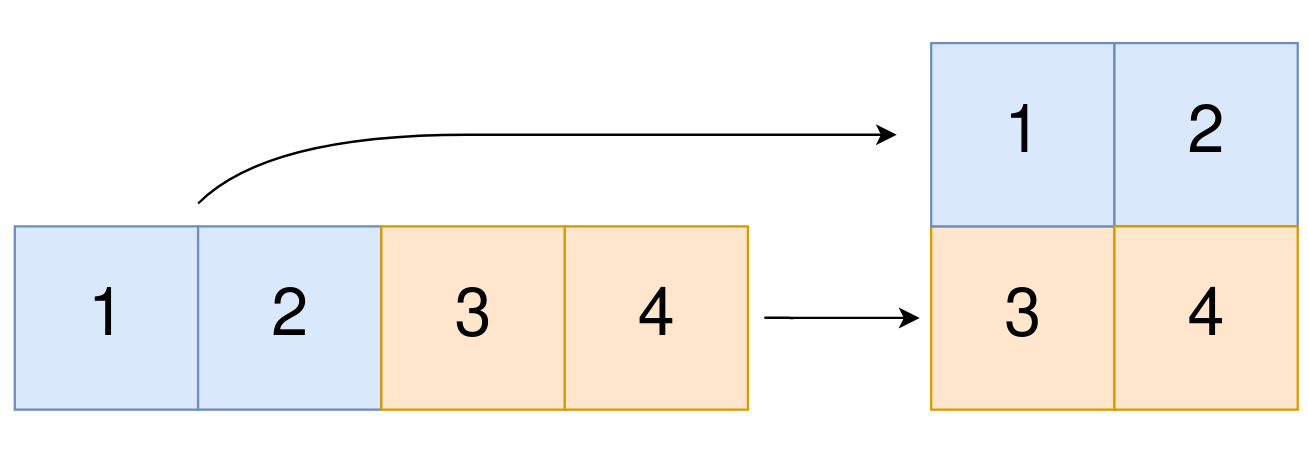There are n houses evenly lined up on the street, and each house is beautifully painted. You are given a 0-indexed integer array colors of length n, where colors[i] represents the color of the ith house.
Return the maximum distance between two houses with different colors.
The distance between the ith and jth houses is abs(i - j), where abs(x) is the absolute value of x.
Example 1:

Input: colors = [1,1,1,6,1,1,1] Output: 3 Explanation: In the above image, color 1 is blue, and color 6 is red. The furthest two houses with different colors are house 0 and house 3. House 0 has color 1, and house 3 has color 6. The distance between them is abs(0 - 3) = 3. Note that houses 3 and 6 can also produce the optimal answer.
Example 2:

Input: colors = [1,8,3,8,3] Output: 4 Explanation: In the above image, color 1 is blue, color 8 is yellow, and color 3 is green. The furthest two houses with different colors are house 0 and house 4. House 0 has color 1, and house 4 has color 3. The distance between them is abs(0 - 4) = 4.
Example 3:
Input: colors = [0,1] Output: 1 Explanation: The furthest two houses with different colors are house 0 and house 1. House 0 has color 0, and house 1 has color 1. The distance between them is abs(0 - 1) = 1.
Constraints:
n == colors.length2 <= n <= 1000 <= colors[i] <= 100- Test data are generated such that at least two houses have different colors.
Solution 1: Brute Force
Try all pairs.
Time complexity: O(n2)
Space complexity: O(1)
C++
|
1 2 3 4 5 6 7 8 9 10 11 12 |
// Author: Huahua class Solution { public: int maxDistance(vector<int>& colors) { const int n = colors.size(); for (int d = n - 1; d > 0; --d) for (int i = 0; i + d < n; ++i) if (colors[i] != colors[i + d]) return d; return 0; } }; |
Solution 2: Greedy / One pass
First house or last house must be involved in the ans.
Scan the house and check with first and last house.
Time complexity: O(n)
Space complexity: O(1)
C++
|
1 2 3 4 5 6 7 8 9 10 11 12 13 |
// Author: Huahua class Solution { public: int maxDistance(vector<int>& colors) { int ans = 0; const int n = colors.size(); for (int i = 0; i < n; ++i) ans = max({ans, i * (colors[i] != colors[0]), (n - i - 1) * (colors[i] != colors[n - 1])}); return ans; } }; |
